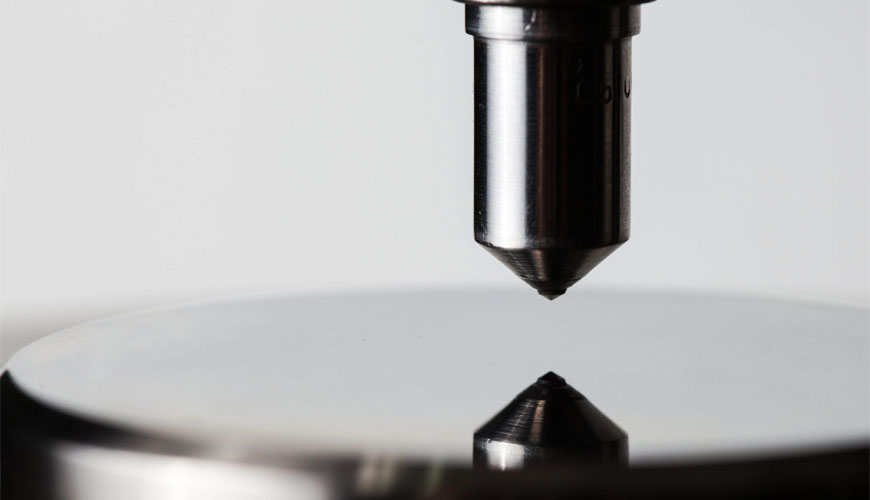

EUROLAB laboratory provides testing and compliance services within the scope of ISO 2039-2 standard. Developed by the International Standards Organization (ISO), this part of the ISO 2039 standard specifies a method for determining the indentation hardness of plastics by means of the Rockwell hardness tester using the Rockwell M, L, and R hardness scales.

A Rockwell hardness number is directly related to the indentation hardness of a plastic material; The higher the Rockwell hardness number, the harder the material. Due to the brief overlap of Rockwell hardness scales with this procedure, two different Rockwell hardness numbers can be obtained on the same material at different scales, both of which may be technically correct.
For materials with high creep and recovery, the time factors involved in applying large and small loads have a significant impact on the results of the measurements. An alternative method of using the apparatus to impart hardness on the Rockwell-α hardness scale is specified in the appendix, which shows how this scale can relate to ISO 2039-1 hardness measurement.
This is a method of determining hardness in which a constant small load is applied to a steel ball resting on the material to be tested, followed by a large load, and then a return to the same small load, all within the specified limits for loading times. The actual measurement is based on the total depth of penetration, minus the elastic recovery after a constant time after removal of the main load, minus the penetration due to the minor load. The Rockwell hardness number is derived from the net increase in impression depth as the load on a recess is increased from a constant small load to a large load and then returned to the same small load.
The standard test specimen will be a flat sheet of at least 6 mm thick. It will have a suitable area to meet the requirements. The test sample does not necessarily have to be square. It should not show any traces of pressure by the indentor on the supported surface after a test.
In the absence of minimum thickness specimens, the test specimen shall be made from a stack of thinner test specimens of the same thickness and of the same material, provided that the surfaces of the individual parts are fully in contact and not in contact with each other. separated from any surface defects (such as pit marks or burrs from saw cuts).
Among the services provided by our organization within the framework of material testing services, there are also ISO 2039-2 standard tests. Do not hesitate to contact our laboratory EUROLAB for your testing and certification requests.
To get an appointment, to get more detailed information or to request an evaluation, you can ask us to fill in our form and reach you.